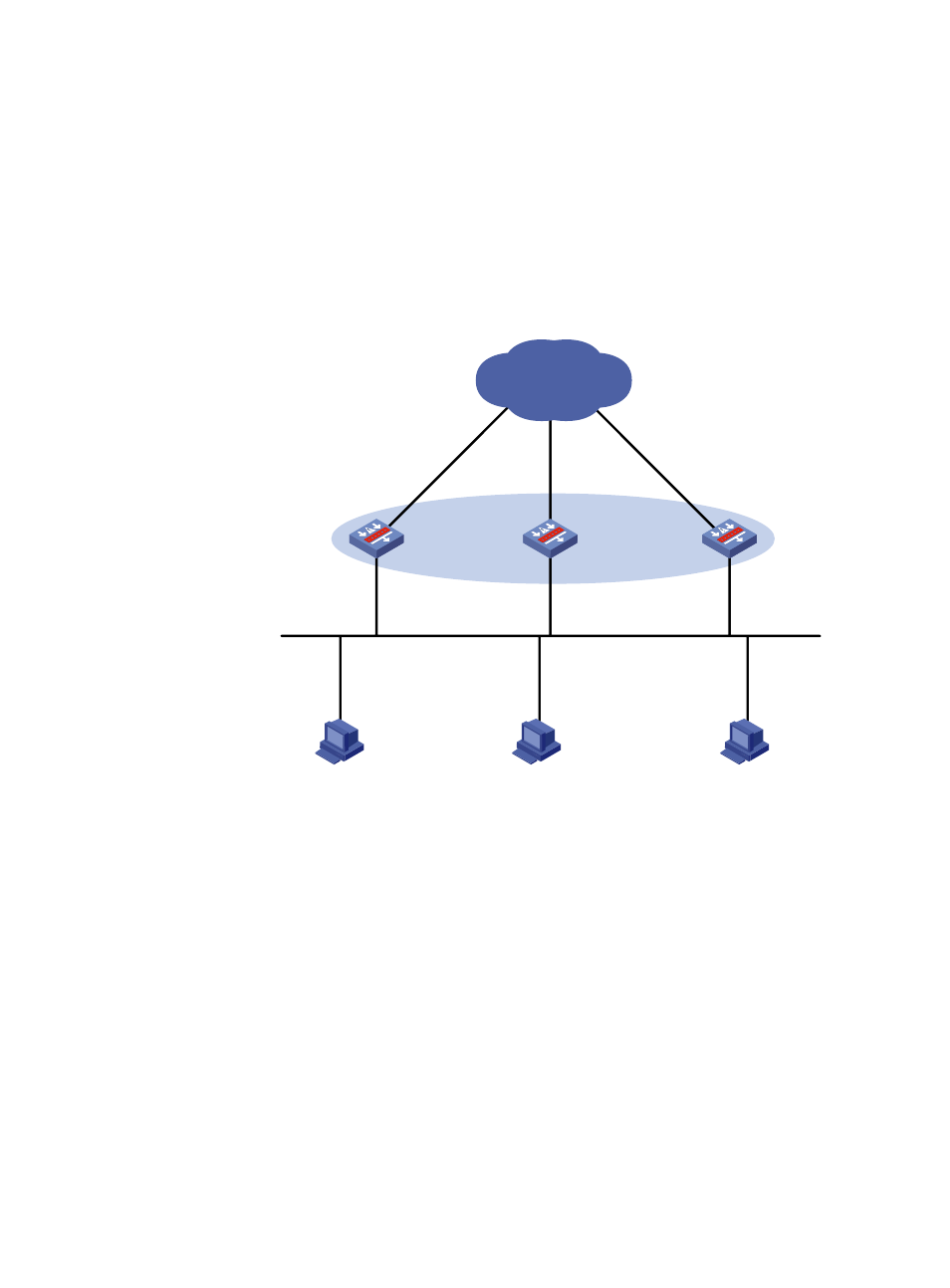Vrrp load balancing mode configuration example, Network requirements, Configuration procedure – H3C Technologies H3C SecPath F1000-E User Manual
Page 33

32
VRRP Load Balancing Mode Configuration Example
Network requirements
•
Device A, Device B, and Device C belong to VRRP group 1 with the virtual IP address of 10.1.1.1/24.
•
Hosts on network segment 10.1.1.0/24 use 10.1.1.1/24 as their default gateway. Use the VRRP
group to ensure that when a gateway (Device A, Device B, or Device C) fails, the hosts on the LAN
can access the external network through another gateway.
•
VRRP group 1 works in load balancing mode to make good use of network resources.
Figure 13 Network diagram for VRRP load balancing mode
Host A
Host B
Host C
Device A
Device B
Device C
GE0/1
IP: 10.1.1.2/24
VIP: 10.1.1.1/24
VMAC: 000f-e2ff-0011
Network
GE0/1
IP: 10.1.1.3/24
VIP: 10.1.1.1/24
VMAC: 000f-e2ff-0012
GE0/1
IP: 10.1.1.4/24
VIP: 10.1.1.1/24
VMAC: 000f-e2ff-0013
Master
AVF 1
Backup
AVF 2
Backup
AVF 3
Gateway IP: 10.1.1.1/24
Gateway MAC: 000f-e2ff-0011
Gateway IP: 10.1.1.1/24
Gateway MAC: 000f-e2ff-0012
Gateway IP: 10.1.1.1/24
Gateway MAC: 000f-e2ff-0013
Configuration procedure
Step1
Configure Device A
# Configure VRRP to work in load balancing mode.
[DeviceA] vrrp mode load-balance
# Create VRRP group 1 and configure its virtual IP address as 10.1.1.1.
[DeviceA] interface gigabitethernet 0/1
[DeviceA-GigabitEthernet0/1] ip address 10.1.1.2 24
[DeviceA-GigabitEthernet0/1] vrrp vrid 1 virtual-ip 10.1.1.1
# Set the priority of Device A in VRRP group 1 to 120.
[DeviceA-GigabitEthernet0/1] vrrp vrid 1 priority 120
# Set Device A to work in preemptive mode. The preemption delay is five seconds.
[DeviceA-GigabitEthernet0/1] vrrp vrid 1 preempt-mode timer delay 5
